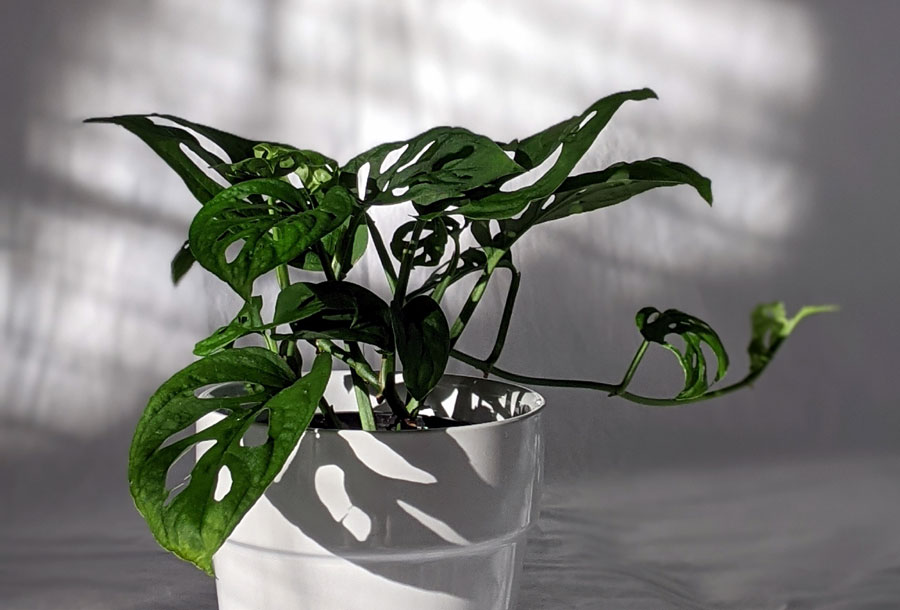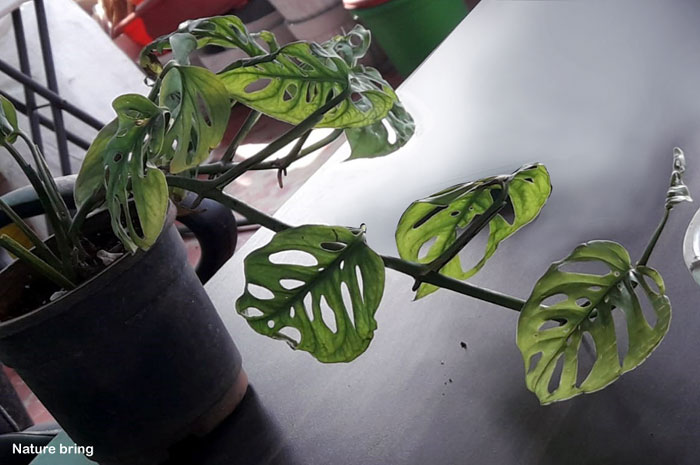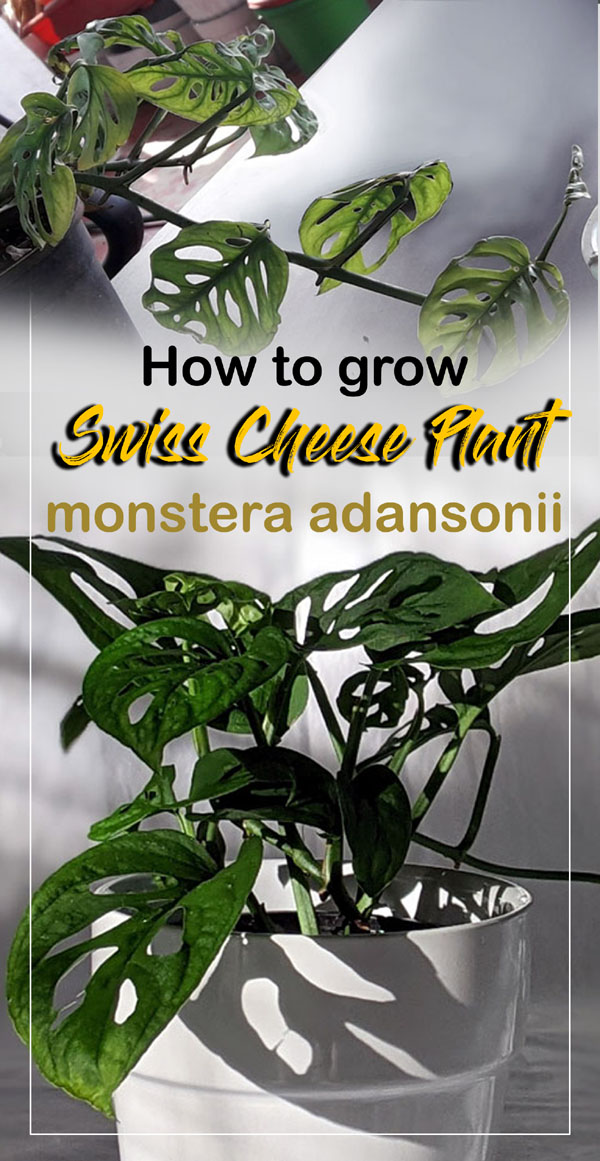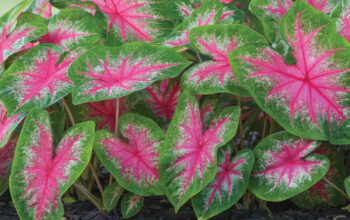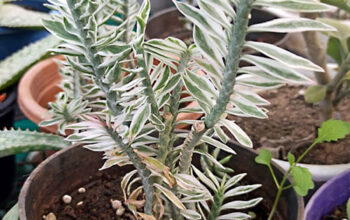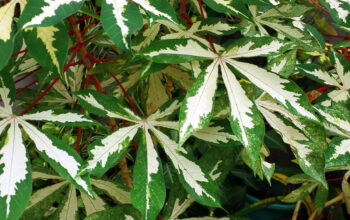Swiss Cheese Plant (split leaf philodendron)
This plant is called swiss cheese plant because of the eyes or holes that develop on the heart-shaped leaves of the plant which look like the holes on swiss-type cheese. Some of the common names of swiss cheese plants are fruit salad plant, fruit salad tree, split-leaf philodendron, Mexican breadfruit, monstera adansonii, etc. Monstera deliciosa is an evergreen epiphytic vine and can grow up to 13 ‘in length.
The aerial roots of the plant have been used as ropes and to make baskets as well. And in some regions, the roots have been used to make a remedy for snakebite.
Overview of five holes plant
Scientific name Monstera deliciosa
Common name Swiss cheese plant, Adanson’s monstera, split leaf philodendron, swiss cheese vine, Mexican breadfruit, monstera adansonii, five holes plant.
Plant type Houseplant
Sun required Full Sun/ partial shade
Soil Peat-based soil, well-drained soil
Soil pH 5.5 – 7.0
Zone 10-11
How to grow Swiss Cheese Plant
The Swiss Cheese Plant is commonly grown inside in containers as it cannot handle frost and may have difficulty surviving outdoors because the plant has a tropical region.
Sunlight
The plant prefers dappled sunlight because of its native surroundings that is covered by a thick forest canopy. Make sure to keep your plant in an area receiving full morning sun or indirect sunlight throughout the day.
Do not place it in an area getting direct sunlight because the leaves may burn easily. It can tolerate less sunlight too, but the growth of the plant may get slower.
Soil
Peat-based potting soil is best for swiss cheese plants because it helps in keeping the soil moist without making it waterlogged. Plant your swiss cheese plant in a container having draining holes with a good quality peat-based soil mixture. The plant may not thrive well in potting soils containing compost or bark.
A soil mix containing 1-part peat moss, 1-part perlite, and 4 parts pine barks fines makes an excellent soil mix for the plant.
Watering
Wait until the top few inches of the soil feels dry before watering the plant. The plant appreciates moist soil but not soaked soil, so do not over-water your plant and make sure that the pot has draining holes in it. Allow the soil to dry out some between the waterings.
Water the plant once a week during the growing season and less during the fall or winter season. If your plant does not get enough water, the leaves may curl, droop or become crispy from the edges.
Temperature and humidity
The plant thrives best in warm room temperatures of at least 18 degrees Celsius or warmer. Providing the plant with the right temperature conditions is not much of a difficult task.
The swiss cheese plant requires moderately moist soil and high humidity. The kitchen or bathrooms are some of the spots that are best for placing your plant. You can grow it in rooms with natural humidity or spray it every now and then with water. You can keep the leaves lush and green by boosting the humidity level of the plant with humidifiers.
Fertilizer
Do not fertilize the plant for the first six months after planting the seedlings. A 20-20-20 liquid fertilizer is best for your swiss cheese plant. After repotting your plant, water it deeply and then wait for a week or two to start feeding your plant monthly with an all-purpose liquid fertilizer because the plant needs some time to establish its root systems.
Repotting
The monstera delicious plant should be repotted every few years to make sure that the soil gets enough nutrition and space for the rapidly growing plant. When the edges of the leaves become brown and thin, it is a sign that the plant needs repotting.
If the soil does not get the treatment it needs, it can hurt the overall growth of the plant in the long run.
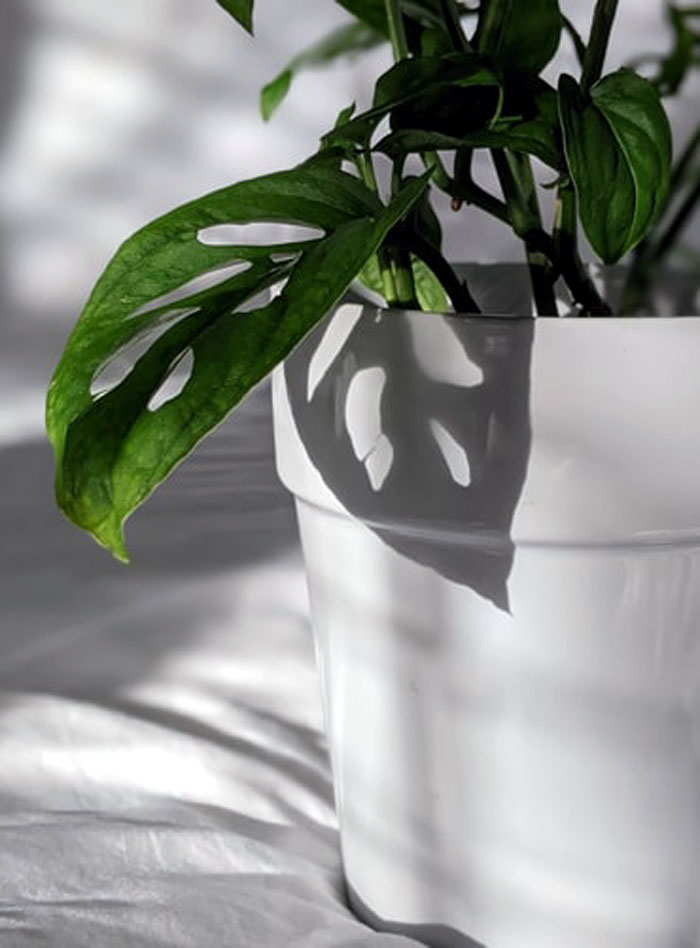
Pruning monstera adansonii
The fertilizing and pruning schedule is somewhat similar. Since the monstera adansonii is a climber, it can go out of control and should be managed by pruning it back. Cut out the old and diseased leaves lying on the base of the stem. Since pruning encourages the growth of the plant, make sure that you cut it wisely in areas where you want it to grow. Cut at the top, if you want to make your plant taller.
Pruning can be done anytime when the plant seems uncontrollable, pruning keeps the plant overall healthy. Cuttings from the plant properly can also be propagated and grow a new swiss cheese plant. The best time to prune your plant is early spring before the swiss cheese plant enters its growing season.
Read also:
How to grow Monstera deliciosa. How to grow bay leaf plants. Growing oregano at home. Trimming tree and houseplants. Growing Passion flowers in containers. 10 root vegetables easy to grow.
For Pin

